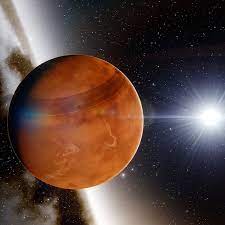November 28 is marked as Red Planet Day

Red Planet Day 2022: November 28 is Red Planet Day, commemorating the launch of one of the most major space missions to Mars. After 3 previous attempts, Spacecraft Mariner 4 became the first successful flyby of Mars. The spacecraft took off on November 28, 1964, and arrived on Mars on July 14, 1965. The successful mission produced 22 pictures of the Martian surface. These pictures were the first-ever close-up photos to come from deep space. This mission, along with several others that occurred afterward, has helped us learn much about the red planet.
November 2022 Current Affairs Quiz
About the Mars:
The fourth planet from the Sun is the Red Planet or Mars. It has a very thin atmosphere over a dusty, chilly, desert world. Along with having seasons, polar ice caps, canyons, extinct volcanoes, and evidence that it was once even more active, Mars is a dynamic planet.
about this planet:
- It’s the iron oxide on the planet’s surface that makes it red
- Mars is half the size of Earth but it’s still the fourth largest planet.
- The minimum distance from Earth to Mars is about 33.9 million miles.
- It’s the fourth planet from the sun.
- Deimos and Phobos are the names of the two moons on Mars.
- The temperature ranges from -191 to 81 ℉.
- The atmosphere is thin and is mostly made up of carbon dioxide.
- Mars boasts the highest mountain is our solar system and it’s 3 times the height of Mount Everest.
- One year on Mars is equal to 687 Earth days.
- In 2018, scientists found evidence of a lake under a polar ice cap on Mars.
One more amazing fact is that due to the difference in gravity, a 100-pound man would only weigh 38 pounds on Mars. It’s no surprise that so many people desire to go to Mars! In fact, NASA hopes to send humans to Mars by 2030.
How many country visit Mars?
After the Cold War, which saw intense competition between the USSR and the US in terms of deepening their forays into space, other countries also launched their explorations.
NASA has a lander (Mars Insight), a rover (Curiosity), and three orbiters (Mars Reconnaissance Orbiter, Mars Odyssey, MAVEN); India’s ISRO has an orbiter (Mangalyaan-1). India’s Mars Orbiter Mission, a technology demonstration venture carried five scientific payloads (total 15 kg) collecting data on surface geology, morphology, atmospheric processes, surface temperature and atmospheric escape process.
The European Union has 2 orbiters (Mars Express and ExoMars Trace Gas Orbiter); and China and the UAE will each have an orbiter (Hope and Tianwen-1 respectively). The UAE mission will study the Martian atmosphere, and will seek to address the billion-dollar question of how and why Mars lost its atmosphere.